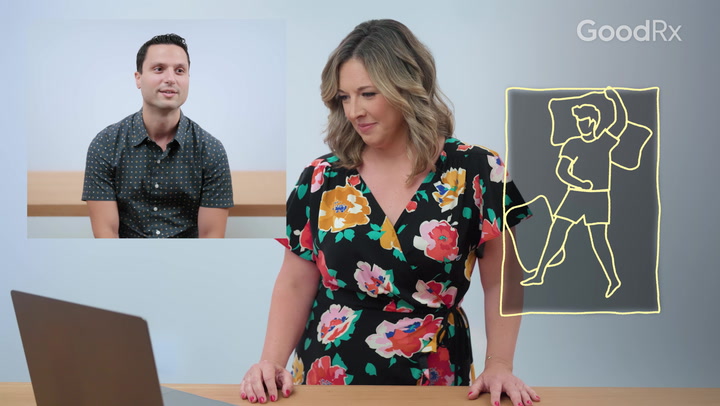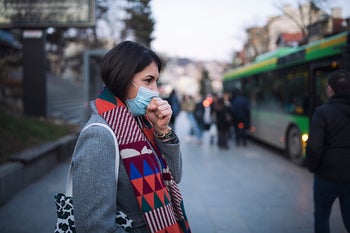
How Long Is a Cold Contagious?
Key takeaways:
A cold is an upper respiratory illness that can be caused by many different viruses.
People are most contagious during the first 2 to 3 days of their cold, when they’re most likely to pass the virus to others. But technically, you’re contagious as long as you have cold-like symptoms.
During the first 3 days of your cold, try to stay home and away from others as much as possible. You can return to your usual activities once your symptoms start getting better.

The common cold is a term used to describe an upper respiratory illness caused by viruses. You can develop a cold when a virus gets into your eyes, nose, throat, and sinuses.
There are more than 200 viruses that can cause the common cold, including the virus that causes COVID-19, RSV (respiratory syncytial virus), and influenza. But Rhinovirus tends to be the major cause of the common cold. This is especially the case during peak cold and flu season, when it accounts for up to 80% of all upper respiratory tract illnesses.
Rhinovirus is highly contagious. And so are most of the other viruses that cause the common cold. If you’ve recently come down with a cold, here’s when you’re most contagious and how to keep yourself and others from getting sick.
How long are you contagious when you have a cold?
The common cold is contagious for about a week. Technically, you’re contagious as long as you have cold-like symptoms. Most people experience cold symptoms for 7 to 10 days, though some may feel better faster.
Your cold symptoms are a sign that the virus causing your cold is still active inside your body. If the virus is still active, you can pass it to others through respiratory droplets.
You can pass those droplets to others anytime you cough, sneeze, or talk. You can also spread them through direct contact, like hugging or kissing, or through objects you touch before washing your hands.
When you’re sick, it helps to know what to expect. Learn more about the common cold stages and timeline.
Antibiotics don’t help cold symptoms, but what does? Try these home remedies to feel better faster.
Can you stop a cold before it starts? Taking certain steps might help reduce your chances of getting sick.
When are you most contagious?
People are most contagious during the first 3 days of their cold because that’s when you shed a lot of live virus in your respiratory droplets. This is also when cold symptoms tend to be at their worst.
After 3 days, the amount of virus you shed starts to drop off. So, while you can still pass the virus to others, it’s much less likely during the latter part of your cold.
How long should you stay home from work or school?

Plan to stay home from work or school during the days your cold symptoms are at their worst. This is usually on the second and third day of your cold. There are two reasons to stay home as much as possible. First, you’re contagious and can pass the illness to others. Second, if you’re feeling really sick, you won’t be able to perform at your best. This is true for both adults and children. It’s a good idea to rest and wait until you’re feeling ready to go back to your usual routine.
But if your symptoms are getting better and you’re fever-free, it’s safe to get back into your routine. Start with your most important activities, like work or school. Over the next few days, add in other activities, like sports or gym time.
Adults get colds about two to four times a year, and children get about eight colds per year. So, those sick days can add up fast. Every year, the common cold causes about 20 million days of missed work and 22 million days of missed school.
If you need to get back to work or school as soon as possible, make sure you don’t have a fever and wear a mask until your cold symptoms go away completely. This’ll help protect others from catching your virus.
How do you catch a cold?
There are three main ways to catch a cold:
You breathe in respiratory droplets containing the virus that causes the common cold. These droplets come from other people who are sick. They’re made when people talk, cough, sneeze, sing, or yell.
A person with a cold sneezes or coughs near you or kisses you. This spreads respiratory droplets directly to your eyes, nose, or mouth.
You touch a surface that has the common cold virus on it and then you touch your eyes, nose, or mouth. People with a cold virus can pass respiratory droplets to their hands and then to an object, like a phone or desk. Rhinoviruses can survive for up to 2 hours on human hands and up to 1 day on other surfaces.
After exposure to a virus that causes a cold, you can start experiencing symptoms within 10 to 12 hours. Most people begin getting sick within 3 days.
How can you prevent spreading a cold?
If you have a cold, there are ways to prevent spreading it to your family and friends.
Here are some things you can do:
Wear a mask until all your symptoms are gone. A mask reduces the number of respiratory droplets you spread into the air.
Wash your hands. Washing your hands frequently keeps germs off your hands. If soap and water aren’t available, you can use alcohol-based hand sanitizers.
Cover your mouth with your elbow when you sneeze or cough. This helps keep you from spreading respiratory droplets into the air.
Disinfect high-contact surfaces. Clean the surfaces and items that you share frequently with others, like toilets, faucets, tabletops, and phones. When you’re sick, don’t share utensils, cups, or anything that goes into your mouth or near your face.
Stay home. Limit your contact with others as much as possible until you start feeling better.
Frequently asked questions (FAQs)
The incubation period is different for each cold virus. But Rhinovirus — the most common cause of the cold — has an incubation period of 1 to 3 days.
The good news is that Rhinovirus survives 24 hours or less on various surfaces. The duration is likely much shorter on human skin. Transmission through respiratory droplets is the more common way to spread the infection.
It’s hard to say for sure, and it probably depends on how long you’re sick. A cold is most contagious in the first few days and becomes less so over time. Experts believe a person with a cold may shed virus for 1 to 2 weeks. But this period may be longer in children and people with weakened immune systems.
The bottom line
A cold is a viral respiratory illness that is very contagious. People who have a cold are most contagious the first 2 to 3 days of the illness. But they can remain contagious for up to 2 weeks or until all their symptoms go away. Most people can safely return to work or school as long as they don’t have a fever and their symptoms are getting better.
Why trust our experts?



References
Allan, G. M., et al. (2014). Prevention and treatment of the common cold: Making sense of the evidence. Canadian Medical Association Journal.
Griffin, J., et al. (2023). How long do cold and flu viruses stay contagious on public surfaces? PBS News.
Heikkinen, T., et al. (2003). The common cold. The Lancet.
Katz, S., et al. (2024). Common cold. Merck Manual Professional Version.
National Health Service. (2024). Common cold.
Pappas, D. E. (2017). The common cold. Principles and Practice of Pediatric Diseases.
Thomas, M., et al. (2023). Upper respiratory tract infection. StatPearls.
Winther, B., et al. (2011). Rhinovirus contamination of surfaces in homes of adults with natural colds: transfer of virus to fingertips during normal daily activities. Journal of Medical Virology.
Zlateva, K. T., et al. (2014). Prolonged shedding of rhinovirus and re-infection in adults with respiratory tract illness. European Respiratory Journal.

























